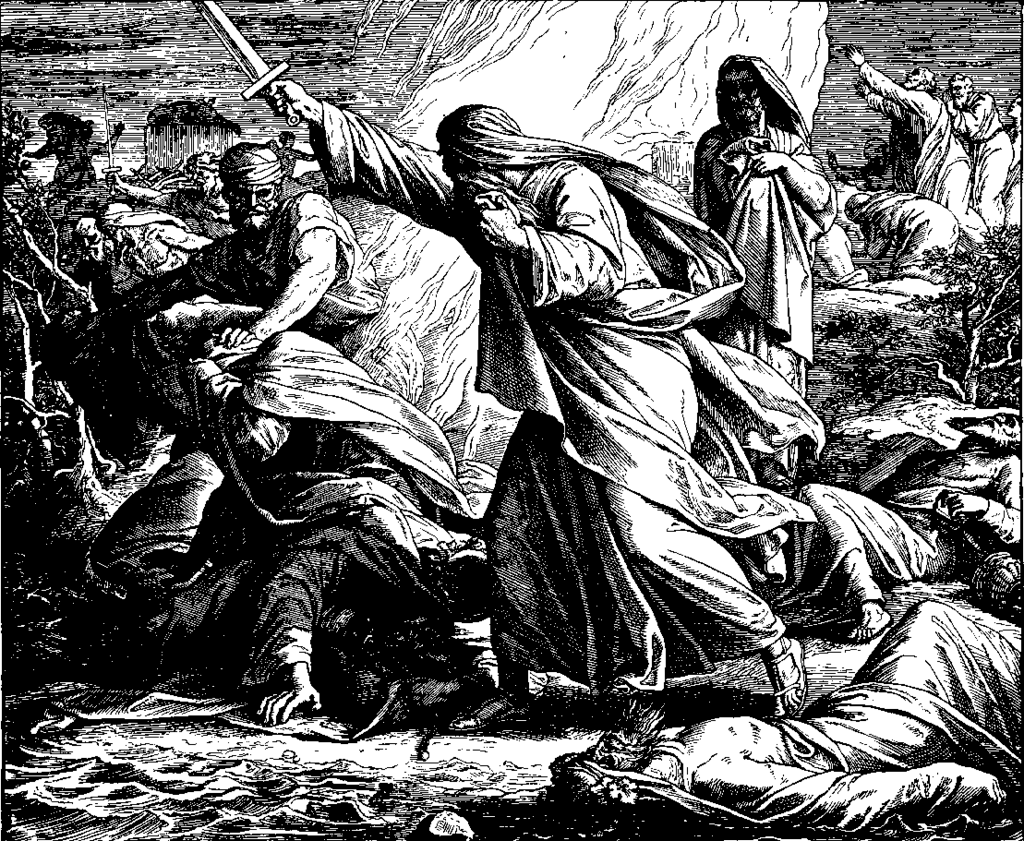Who is Baal? Information about Baal, which Semitic peoples believed in the Middle East in ancient times.

Slaughter of the Prophets of Baal, 1860 woodcut by Julius Schnorr von Karolsfeld (Source : wikipedia.org)
BAAL, is the title or name of certain deitıes found among Semitic peoples of antiquity. In the Semitic languages, baal means primarily “owner,” “possessor,” or “lord.” As a common noun in Hebrew it could mean “husband,” for the husband was possessor and lord of his wife. One could speak of the baal of a house, ox, or field. Elijah is called a baal of hair—a hairy man, or wearer of haircloth (II Kings 1:8). A baal of wrath was a man given to anger.
When applied to deities, baal was more a title, like the English “lord,” than a personal name. The Akkadian form, bel, was used in Mesopotamia for the old Sumerian Enlil, god of the air, and later for Marduk, god of Babylon, and Asshur, god of Assyria.
Gods called Baal were found especially among the Canaanites—the people of Palestine and Syria in the 1000’s b.c. and later of Phoenicia. They used the name Baal most often for one specifîc deity, the god of fertility and rain. Much information concerning this divinity comes from cuneiform texts of about 1400 b.c., found at Ras Shamra (ancient Ugarit) in Syria. There Baal was at first the title applied to Hadad, the ancient international storm-god, but Baal came to be used virtually as his name. In the Ugaritic pantheon he was the son of Dagan, god of grain. He was called Prince Lord of the Earth, the Rider of the Clouds, and Baal Zaphon (Lord of Mount Zaphon, a mountain usually covered with rain clouds).
Baal is one of the chief actors in the myths of Ugarit. In one of them he defeats Prince Sea, in a type of creation myth signifying the con-finement of the primeval waters to their proper realm. In another myth Baal is the dying-and-rising god of fertility. He reigns in the season when the rains fail and the crops grow. When he dies each year, his place is taken by Mot, god of death and sterility, who represents the drought of summer. Baal’s wife-sister, the virgin Anat, searches for hini, and eventually he rises again from the netherworld. His rising represents the beginning of the autumnal rains.
In the Old Testament a few specific Baals are mentioned, such as Baal-berith (Lord of covenant), who had a temple at Shechem (Judges 8:33; 9:4), and Baal-zebub, the healing god of Ekron (II Kings 1: 2ff.), In the period when the Hebrews were settling in Canaan, it is reported that they periodically forsook their god, Yahweh, to serve Baals (for example, Judges 2:11; 3:7; 8:33; 10:6, 10). These were probably local Canaanite deities adopted by the Hebrews. The name appears in Old Testament place-names, such as Mount Baal-hermon (Judges 3:3), Baal-tamar (Judges 20:33), and Baal-peor (Hosea 9:10). In such places there was doubtless a sanctuary for worship of the Baal who was considered the owner and lord of that place.
In the time of King Ahab, his wife Jezebel— a Phoenician princess—actively promoted the worship of her Baal, probably Melkart, god of Tyre. In the opinion of many scholars, Yahweh was sometimes called a baal, and features of Canaanite Baalistic theology and worship were adapted by the Israelites for their religion. The title baal for Yahweh is implied by certain Old Testament personal names, such as Eshbaal (man of Baal), son of Saul (1 Chronicles 8:33; 9:39), and Bealiah, which may mean “Yahweh is Baal” (I Chronicles 12:5). ‘ After full-fledged monotheism was reached, scribes frequently sub-stituted bösheth (shame) for Baal; for example, Eshbaal appears (II Samuel 2:8) as Ishbosheth (man of shame). In New Testament times the name Baal-zebub became a synonym for Satan in the form Beelzebub, or Beelzebul (Matthew 10:25; 12:24, 27).